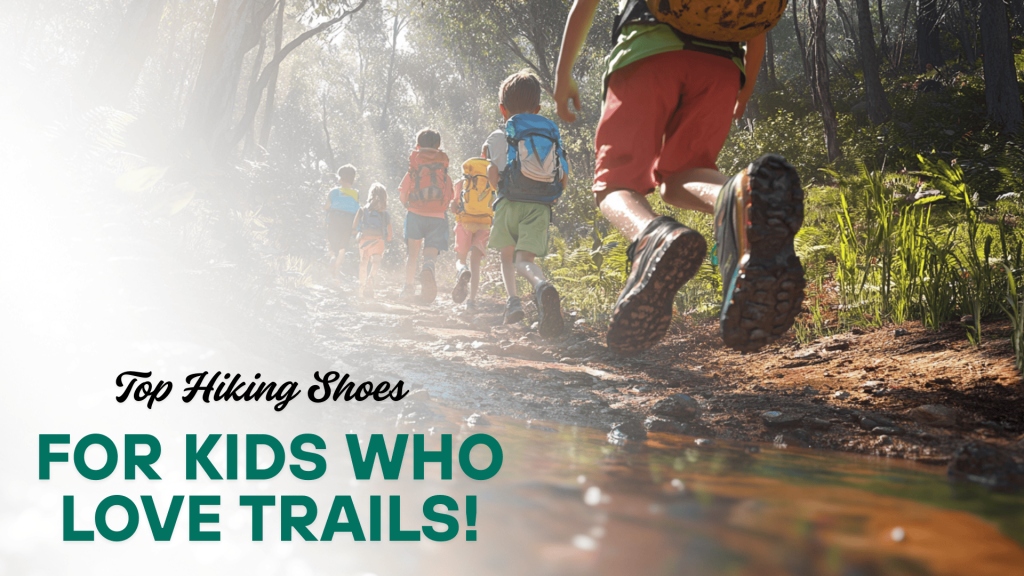Looking for the best hiking shoes for kids? As parents, we know how challenging it can be to find footwear that keeps up with energetic little explorers.
Children need shoes that offer the perfect balance of comfort, durability, and support while tackling rough trails and muddy paths.
Family camping trips and weekend nature walks demand proper hiking shoes to keep little feet protected and happy on the trail. We’ll walk you through our top picks for children’s hiking footwear, covering options for toddlers through teens.
Say goodbye to blisters, wet socks, and mid-hike complaints with these parent and kid-approved hiking shoes that combine functionality with fun designs.
Top-Rated Hiking Shoes for Every Trail Type
Finding the right footwear can make or break your outdoor walking experience. The perfect pair shields your feet, gives you grip on tough ground, and keeps you comfy mile after mile.
For children especially, the right hiking shoes turn what could be whiny walks into happy treks through nature. Kids who feel good on the trail create better family memories and build a lifelong bond with the outdoors.
Our recommendations put special focus on options that work for young feet while handling the unique wear-and-tear that only kids can dish out. Let’s look at some outstanding options for different paths and needs!
Quick Picks: Must-Have Hiking Shoes for 2025
| CATEGORY | OUR PICK | WHY WE LOVE IT |
|---|---|---|
| Best Overall | Merrell Moab 3 | Solid build, good ankle support, and works on most trails |
| Most Light | Salomon X Ultra 4 | Barely feels there, but still tough and grippy |
| Water Shield | Keen Targhee III | Keeps feet dry through streams and rain |
| Kid-Friendly | Columbia Youth Newton | Sturdy, easy to put on, grows with little feet |
| Budget Pick | REI Co-op Flash | Good quality without emptying your wallet |
| Cold Weather | Oboz Bridger | Warm lining, strong grip on snow and ice |
What makes a hiking shoe “good” isn’t the same for everyone. Your foot shape, the places you walk, and how often you go out all matter when picking the right pair.
In the sections below, we’ll go into the details of each shoe, looking at their strong points, weak spots, and who they work best for.
What Makes a Hiking Shoe “The Best”?
Picking the right hiking shoes goes beyond good looks or brand names. Here’s what truly counts when you’re miles from the trailhead with sore feet or facing tricky terrain:
1. Comfort & Fit

Your shoes should feel good from day one, with enough room for toes to move but snug enough to stop rubbing. Try shoes on later in the day when feet are slightly bigger, and wear your hiking socks.
A shoe that pinches in the store will hurt much worse on mile five of your hike. Look for cushioning in the right spots for your foot shape.
2. Traction & Grip
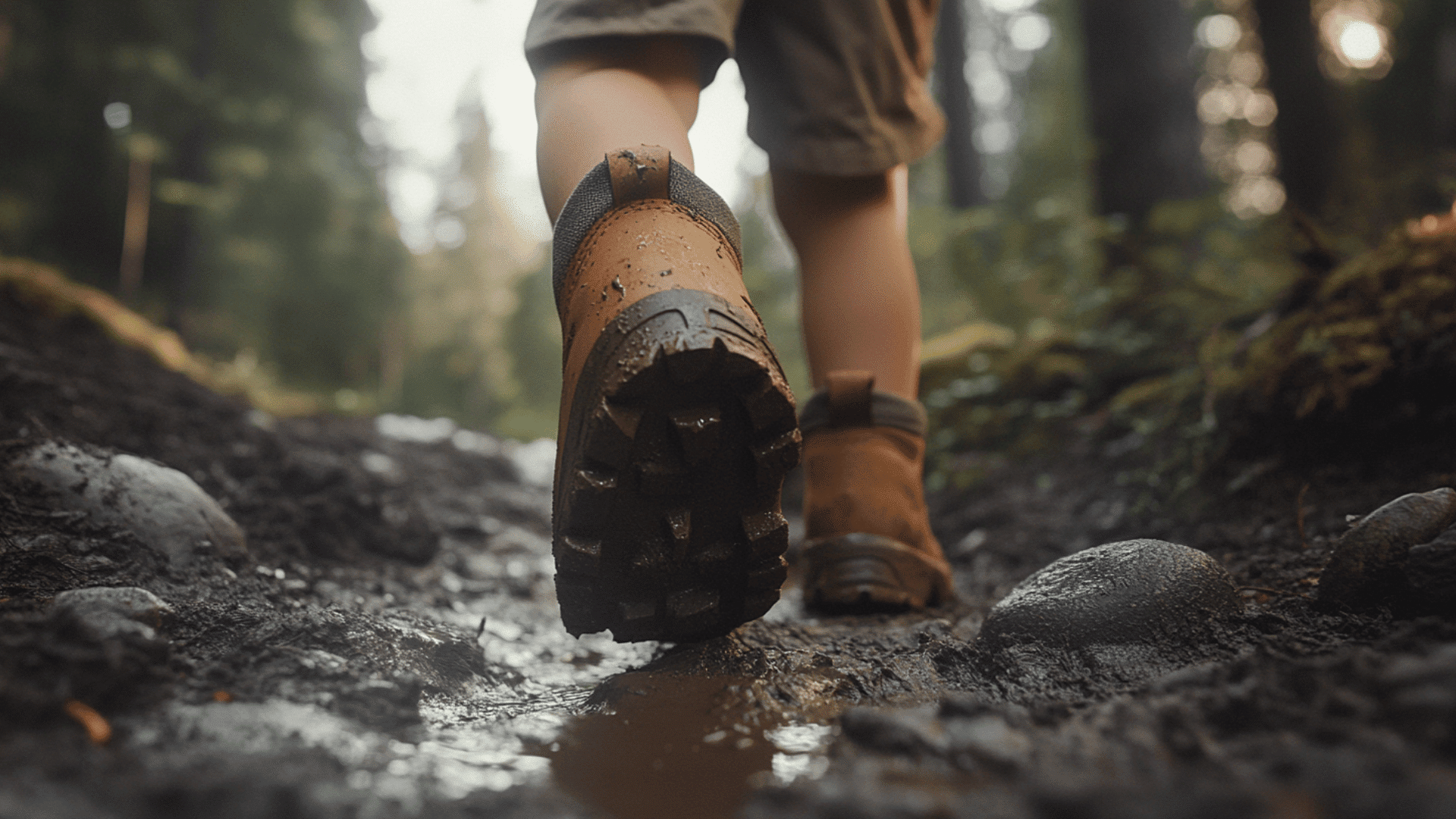
The bottom of your shoe is your link to the ground. Look for deep lugs (the bumps on the sole) that can grab onto mud, rocks, and loose soil.
Different patterns work better for different trails – widely spaced lugs shed mud better, while sticky rubber grips rock well. Good shoes give you confidence on slippery or steep sections.
3. Weight & Flexibility
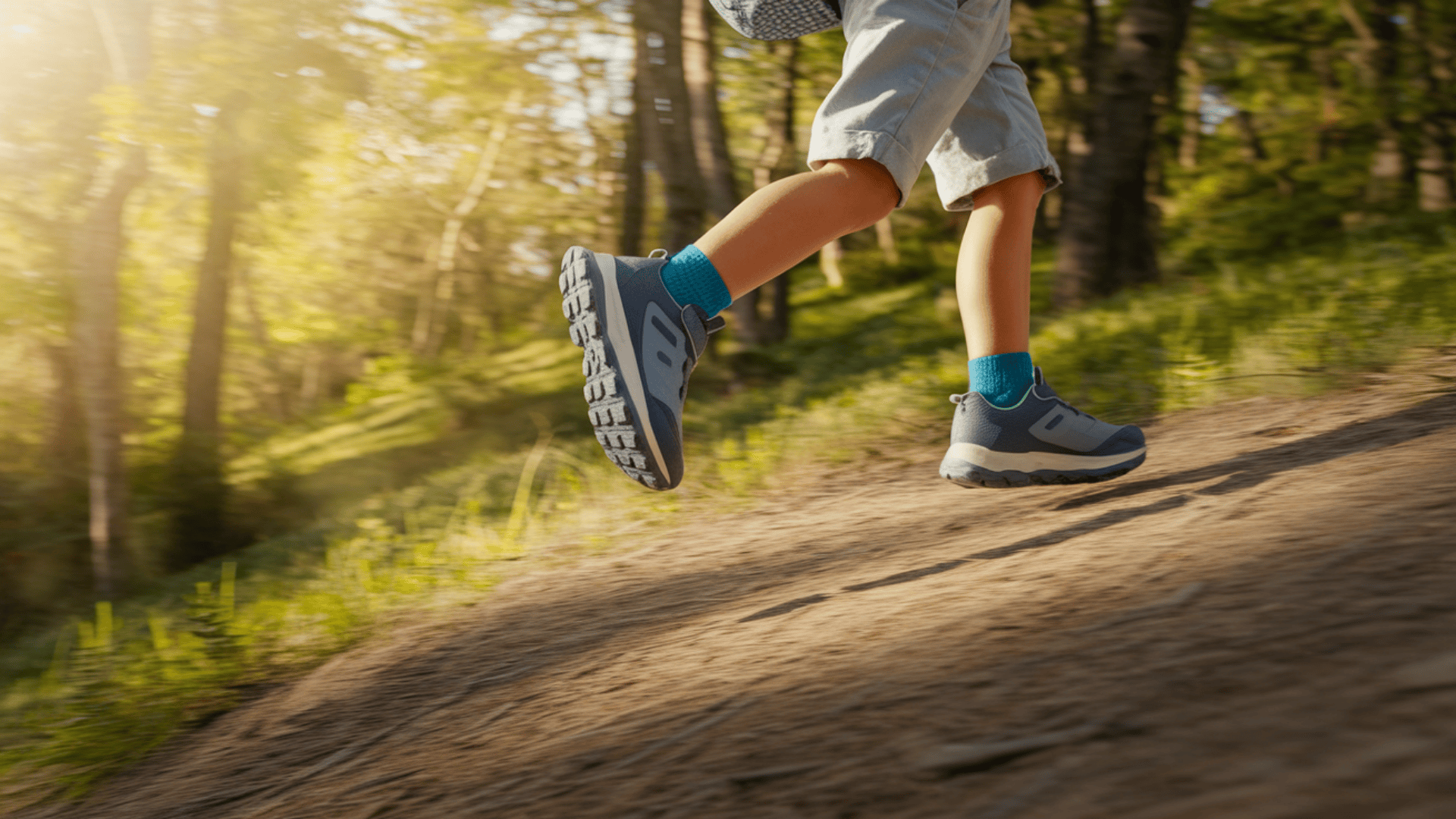
Each extra ounce feels heavier as the miles add up. Light shoes help you move faster with less fatigue but might offer less protection.
Think about your trails and style – tougher, rougher paths might need more shoe, while smooth trails let you go lighter. Your shoes should also bend where your foot bends naturally.
4. Durability
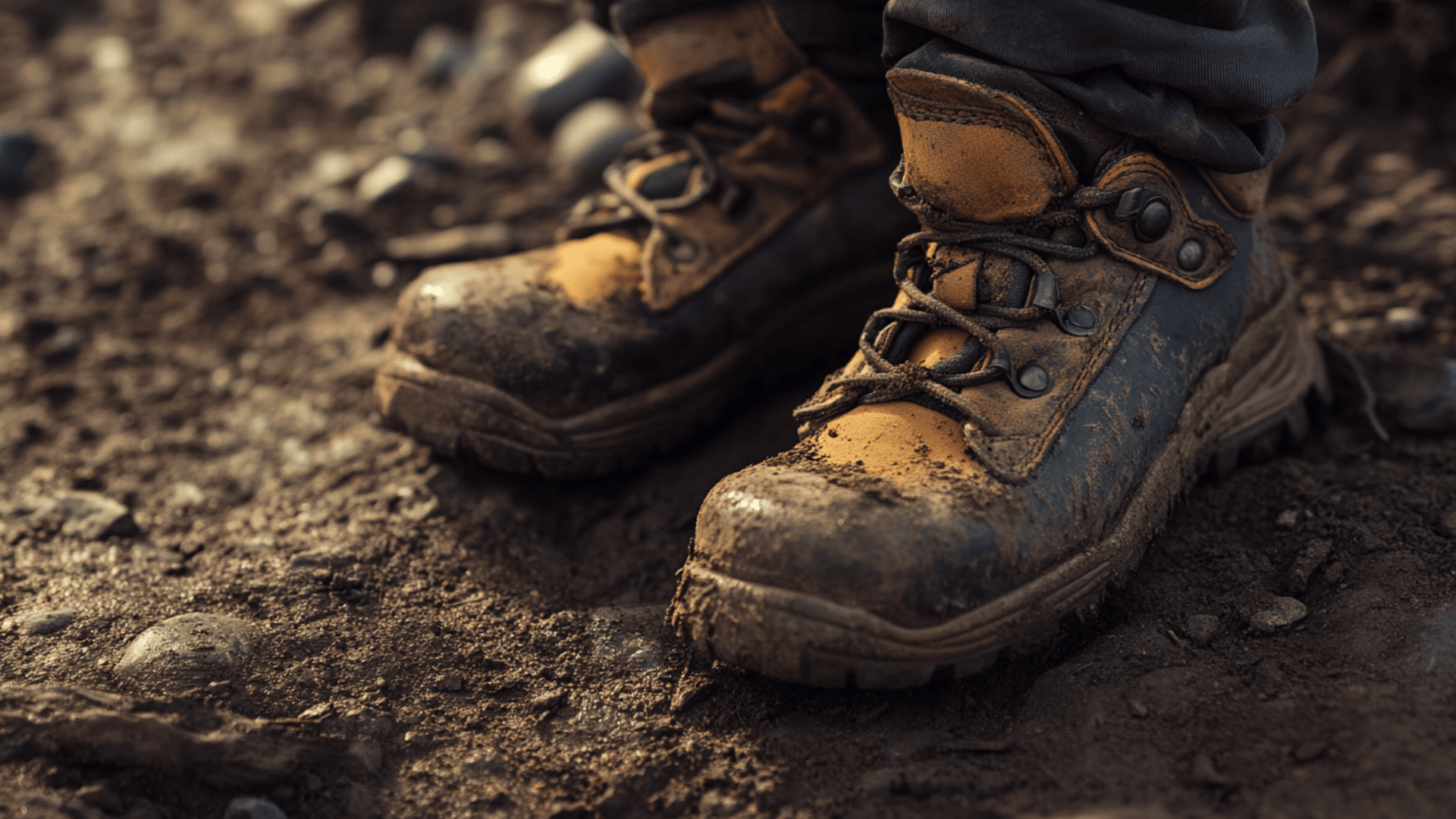
Good hiking shoes aren’t cheap, so they should last. Strong stitching, tough materials, and solid construction make the difference between shoes that last 500+ miles and those that fall apart after a few trips.
Check where the upper meets the sole – this connection often fails first.
5. Waterproofing & Breathability
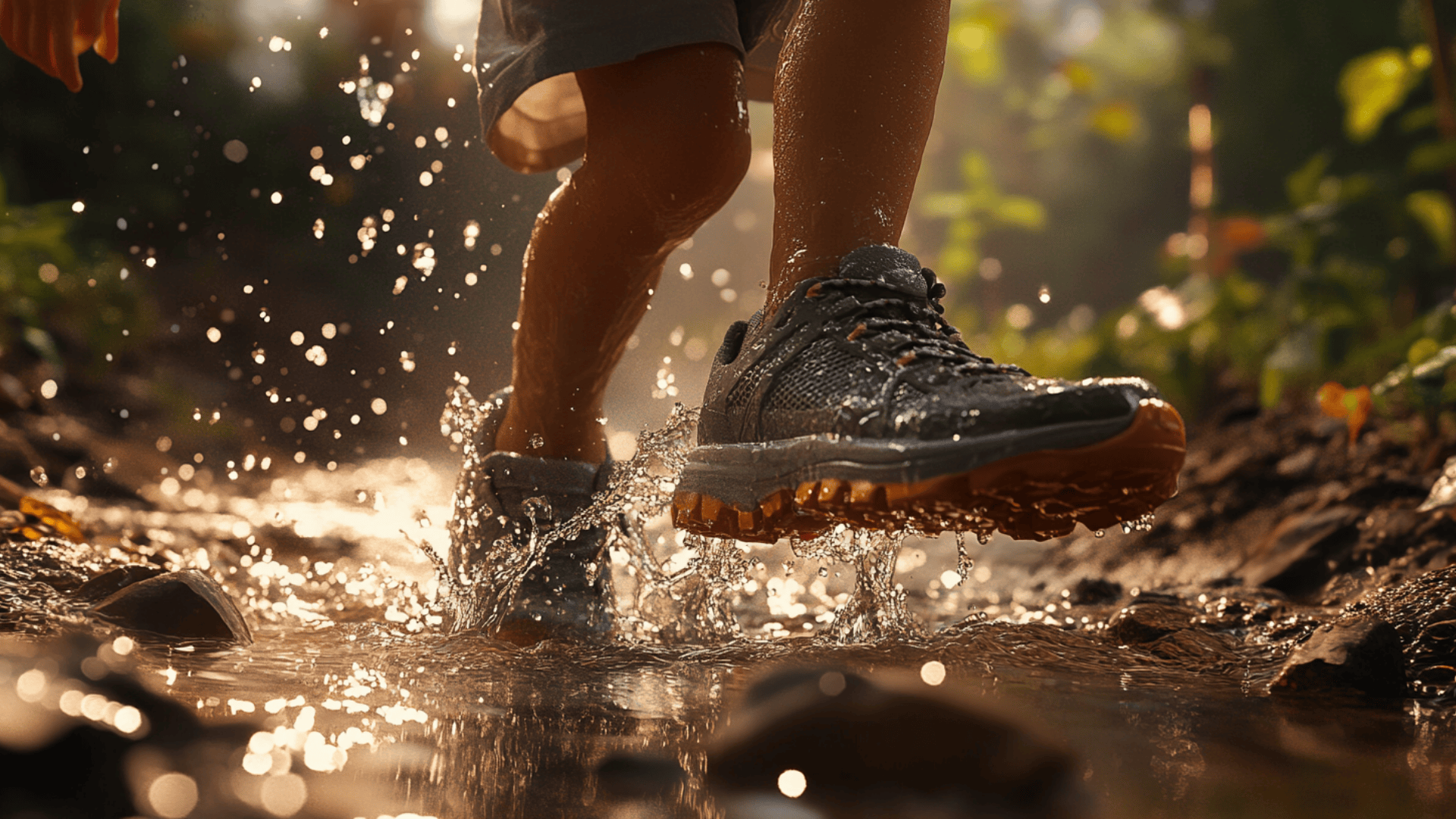
These two qualities often work against each other. Fully waterproof shoes keep feet dry in streams and rain but might make feet hot and sweaty on warm days.
Breathable shoes stay cooler but let water in. Think about your common hiking conditions and pick what matters most to you.
Kids’ Hiking Shoes: What Parents Should Know
Finding the right hiking shoes for children combines proper fit with durability to withstand playground-level abuse. Kids need footwear that protects their developing feet while making outdoor walks enjoyable rather than painful. Here’s what truly matters for young hikers:
1. Age-Specific Features That Matter

Young kids (ages 2-5) need simple shoes with:
- Easy on/off closures they can manage
- Flexible soles that let feet grow properly
- Sturdy toe caps to protect against rocks and roots
School-age kids (ages 6-12) benefit from:
- Better ankle support for more miles
- Tougher build quality as they push limits
- Slightly stiffer soles for rocky paths
Teens need shoes that:
- Look cool enough that they’ll actually wear them
- Provide proper support for growing feet
- Can handle adult-level trails
2. Top 5 Kids’ Hiking Shoes for 2025

Based on parent reviews, durability tests, and comfort ratings:
-
Columbia Youth Newton – Best all-around choice for most kids. Simple hook-and-loop closure, room to grow, and sturdy build that stands up to playground use between hikes.
-
Keen Kids’ Targhee – Best for wet conditions. Like tiny tanks for feet, these stay dry through puddles and mud while fitting well on wider feet.
-
Merrell Kids’ Trail Chaser – Best for narrow feet. These hug slimmer feet without slipping and have excellent grip on slick surfaces.
-
The North Face Hedgehog – Best for cold weather. Added warmth without bulk, and the strap system stays secure even when little hands do the fastening.
-
Adidas Terrex – Best for older kids/teens. Looks like regular sneakers (so kids will actually wear them) but performs like hiking shoes on trails.
3. How to Fit Kids’ Hiking Shoes Properly

Kids can’t always tell you when shoes don’t fit right. Look for:
- Room for a thumb’s width beyond the longest toe
- No red marks after wearing for 30 minutes
- Ability to wiggle toes freely while heel stays put
- No complaints about “hurty spots” during test walks
Have your child try shoes while wearing their hiking socks, and shop late in the day when feet are slightly bigger. Let them walk up and down slopes in the store to check for toe jamming or heel slipping.
Choosing Kids’ Hiking Shoes by Terrain & Weather Conditions
The places your children hike and the weather they face should guide which shoes you buy. Let’s find the right kids’ hiking shoes for different outdoor settings.
1. Dry Trails vs Wet/Muddy Trails

For dry paths, kids need comfort and grip—junior versions of the Saucony Peregrine work well with their smaller lugs that handle packed dirt.
When facing mud and puddles (which kids always find!), look for children’s shoes with widely spaced treads like the Salomon Kids’ Speedcross that shed mud instead of collecting it.
2. Rocky Terrains vs Flat Forest Paths
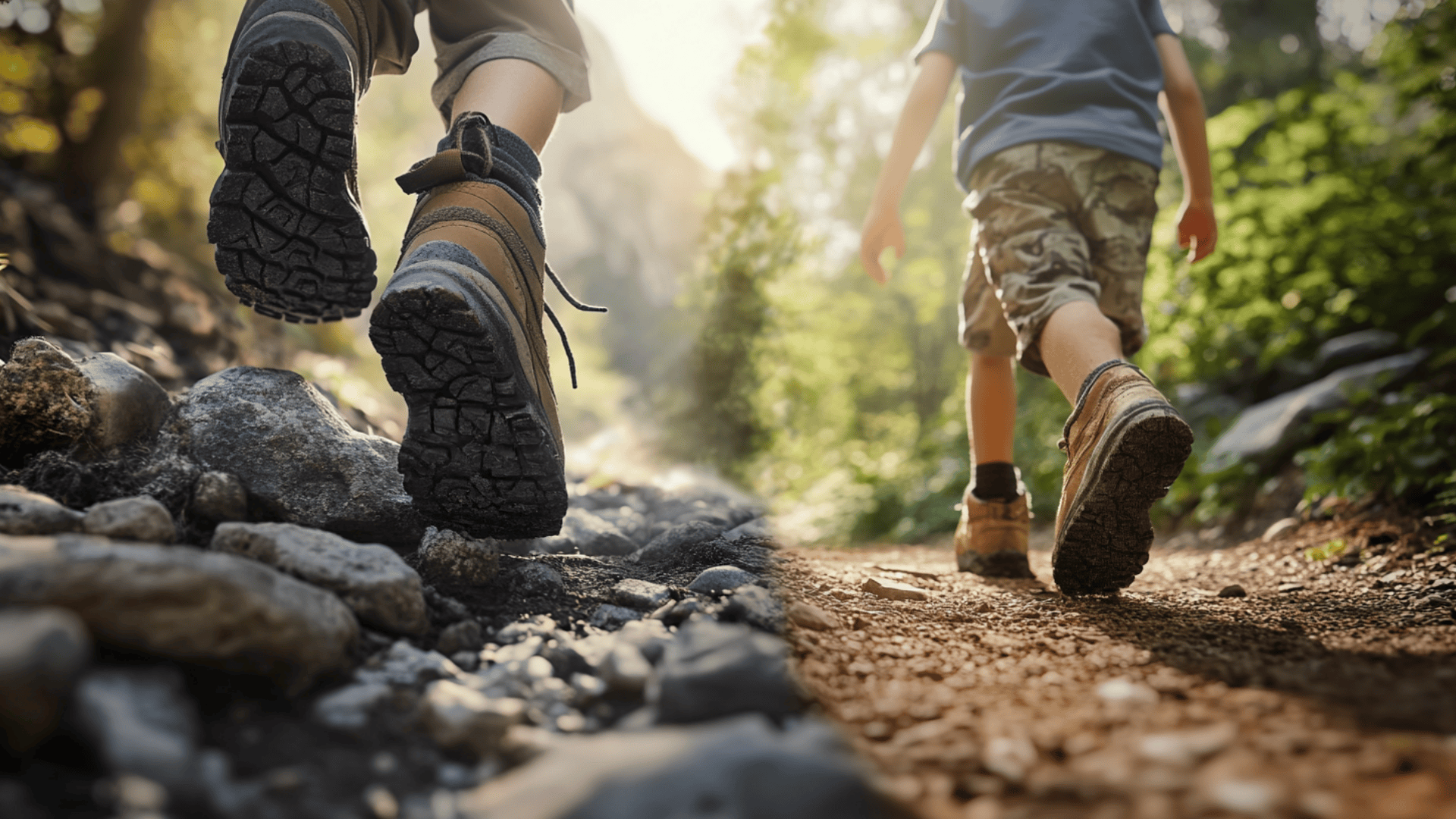
On rocky trails, children need extra foot protection. The Keen Kids’ Targhee includes small rock plates and reinforced toes that shield growing feet from sharp points.
For smooth forest walks, lighter options like the New Balance Kids’ Trail serve well, letting children feel the ground while still protecting against roots and small obstacles.
3. Summer Hikes vs Winter Walks
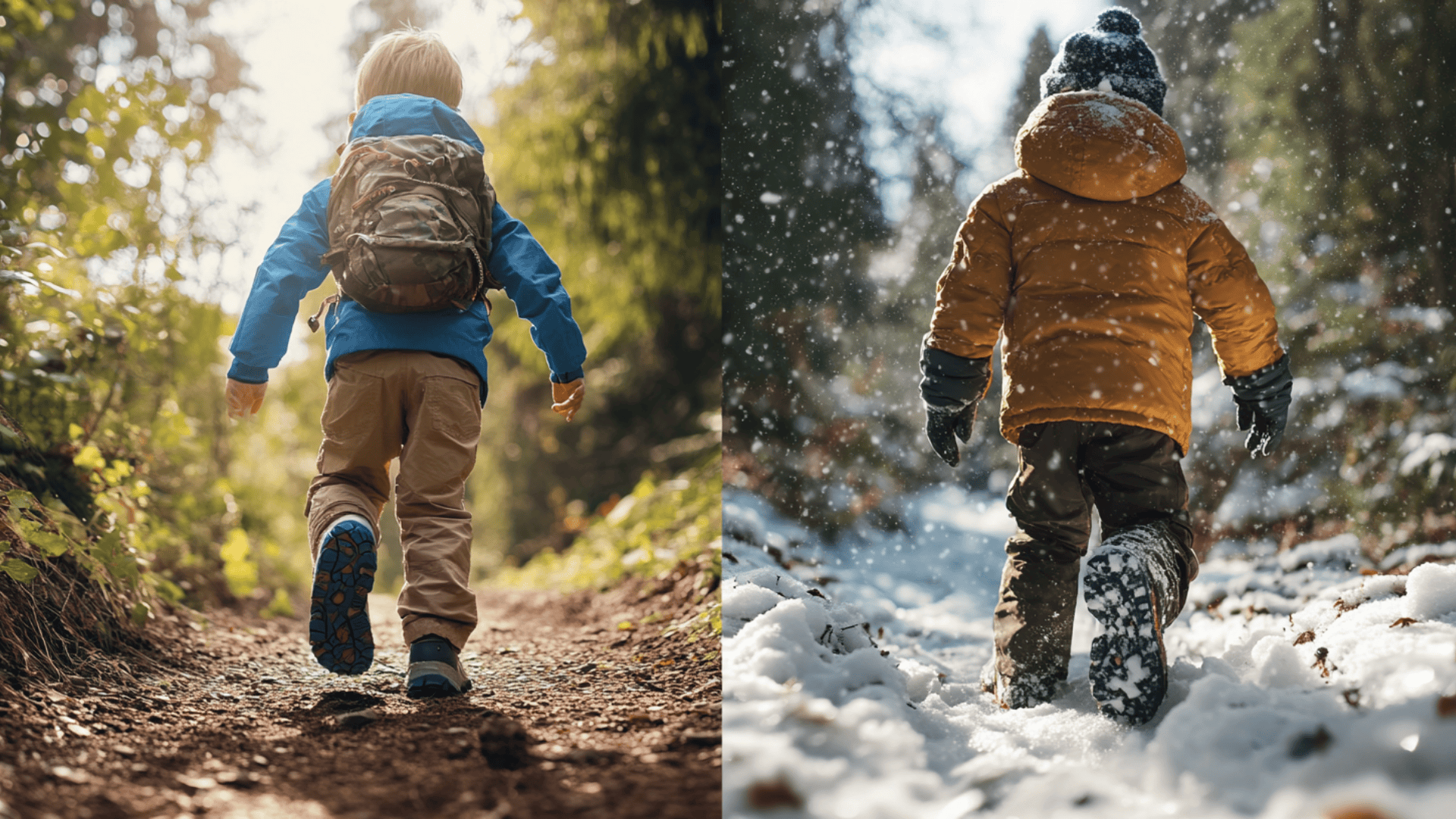
Hot weather calls for breathable kids’ hiking shoes like the Chaco Kids’ Z/1, which keeps feet cool while still offering trail-worthy grip.
For cold-weather family hikes, insulated options like the Keen Kids’ Polar Revel provide warmth for little toes and deeper tread patterns that handle snow and slush better than regular kids’ hiking shoes.
4. All-Season Options for Growing Feet
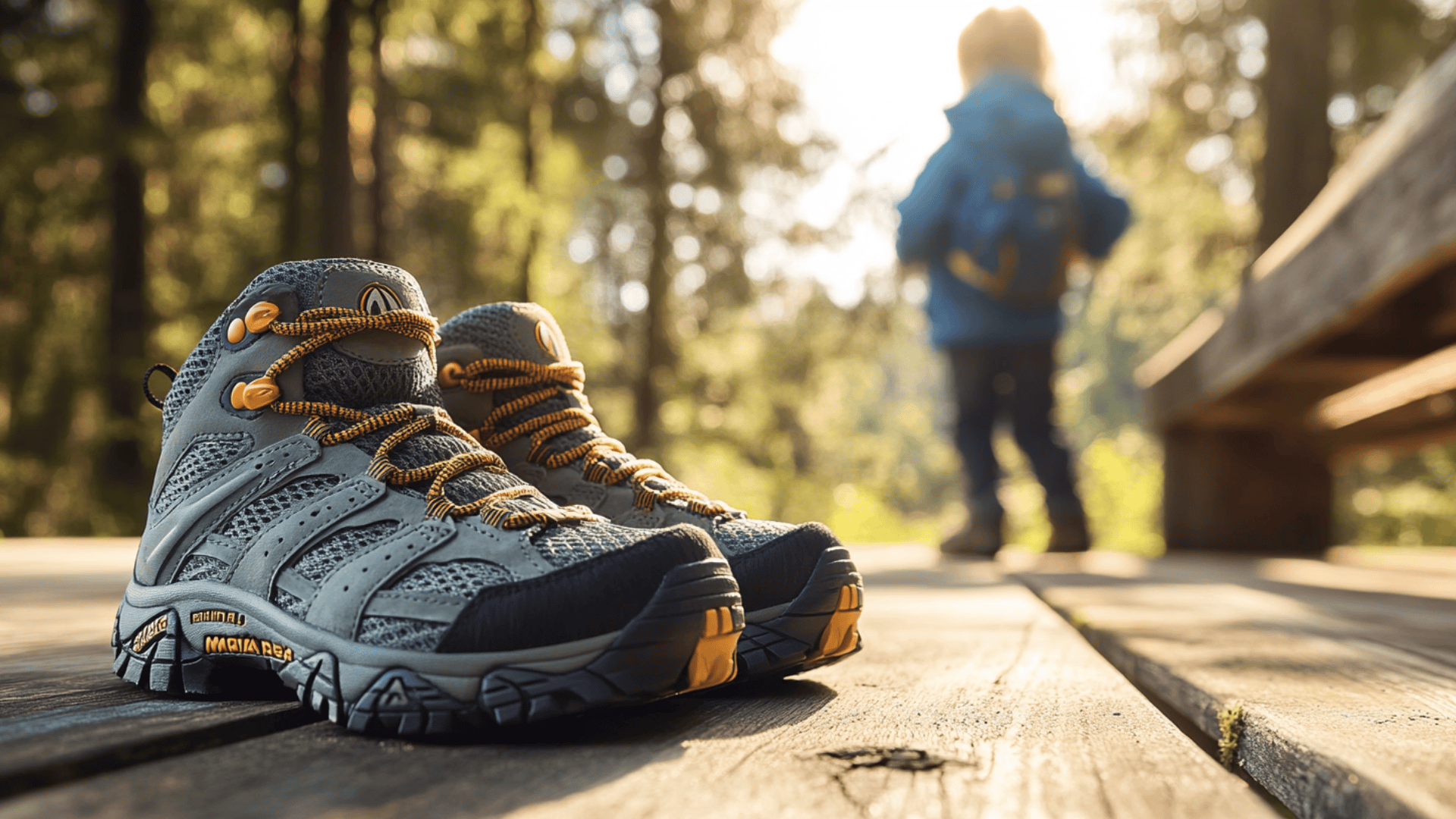
Since children outgrow shoes quickly, versatile models make sense. The Merrell Kids’ Moab works across multiple seasons with its moderate water protection and good breathability.
Some parents buy both waterproof and non-waterproof versions of the same kids’ hiking shoes in slightly different sizes to span seasons and growth spurts, maximizing their investment in quality footwear.
Pro Tips to Get the Most Out of Your Kids’ Hiking Shoes
Small changes in how you buy, use, and care for your children’s hiking shoes can make a huge difference in comfort and lifespan. Here’s what smart parents know:
1. Breaking in Kids’ Hiking Shoes
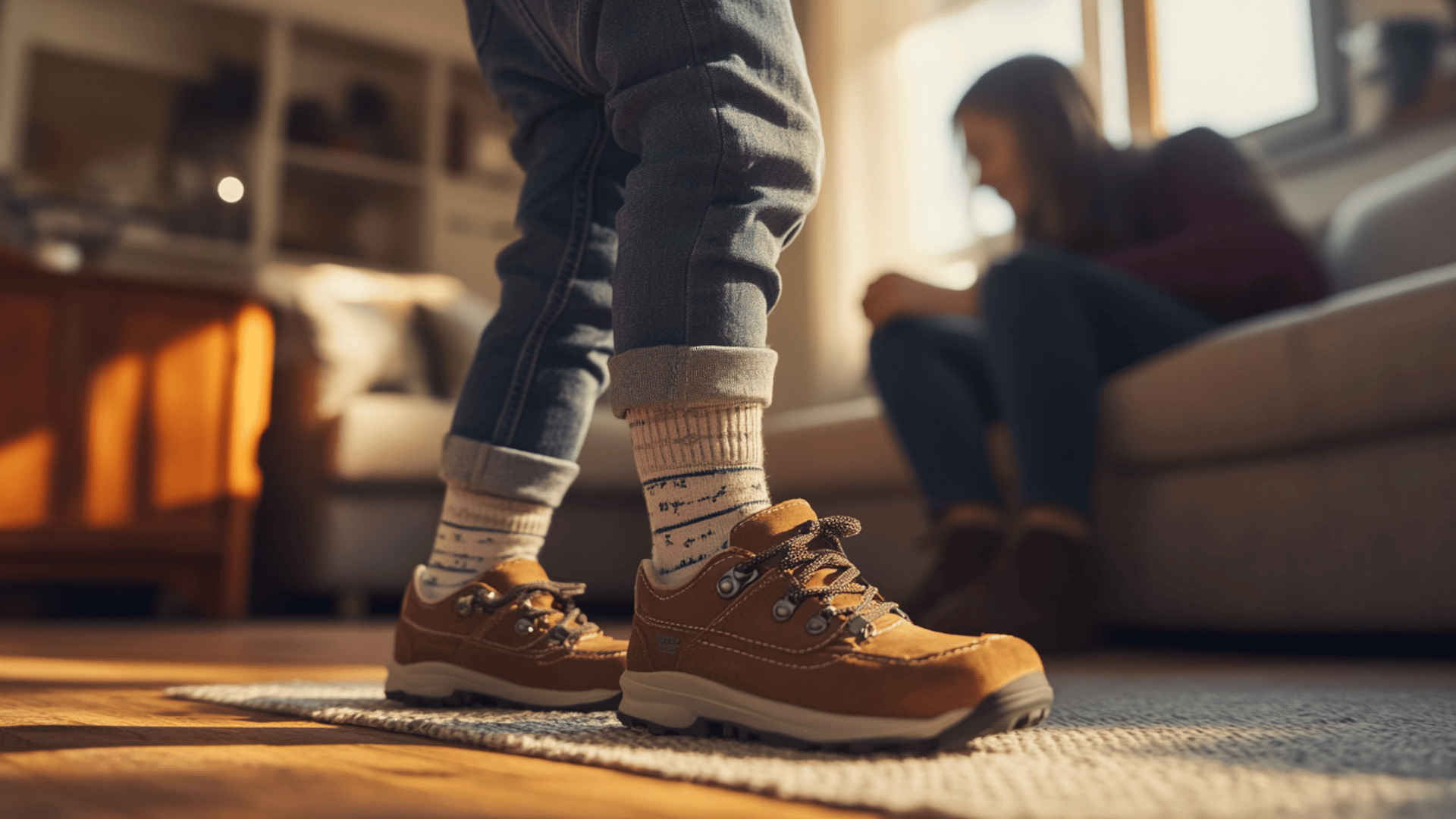
Have children wear new hiking shoes around the house first, then on short neighborhood walks before hitting actual trails.
Most kids’ synthetic hiking shoes need minimal break-in time compared to adult versions. If your child mentions “ouchy spots,” stop immediately and apply moleskin to those areas—children often won’t speak up until blisters have already formed.
Key tips:
- Let kids wear new hiking shoes during indoor play first
- Watch for signs of discomfort during short test walks
- Most children’s hiking shoes need just 2-3 short walks for break-in
2. Choosing the Right Socks for Young Hikers
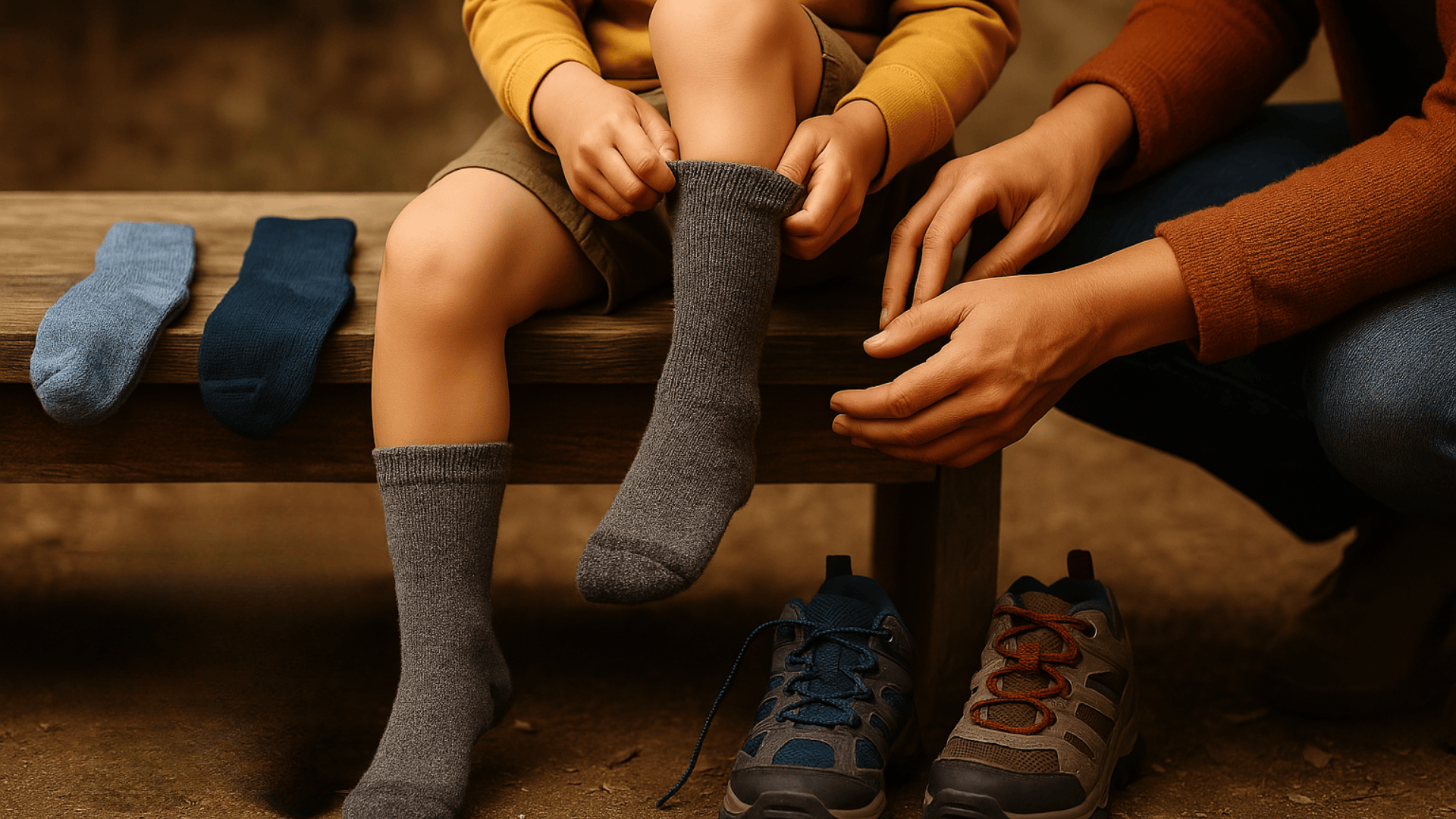
Proper socks matter as much as the shoes! Skip cotton completely for kids’ hiking socks, as they cause blisters when wet. Choose wool or synthetic blends sized correctly for children.
For little hikers with sensitive feet, try the “two-sock method” with a thin liner sock under a thicker hiking sock.
Key tips:
- Use only wool or synthetic blend socks for children’s hikes
- Keep extra pairs of dry socks in your pack for mid-hike changes
- Match sock thickness to weather—thinner in summer, thicker in winter
3. When to Size Up for Growing Feet
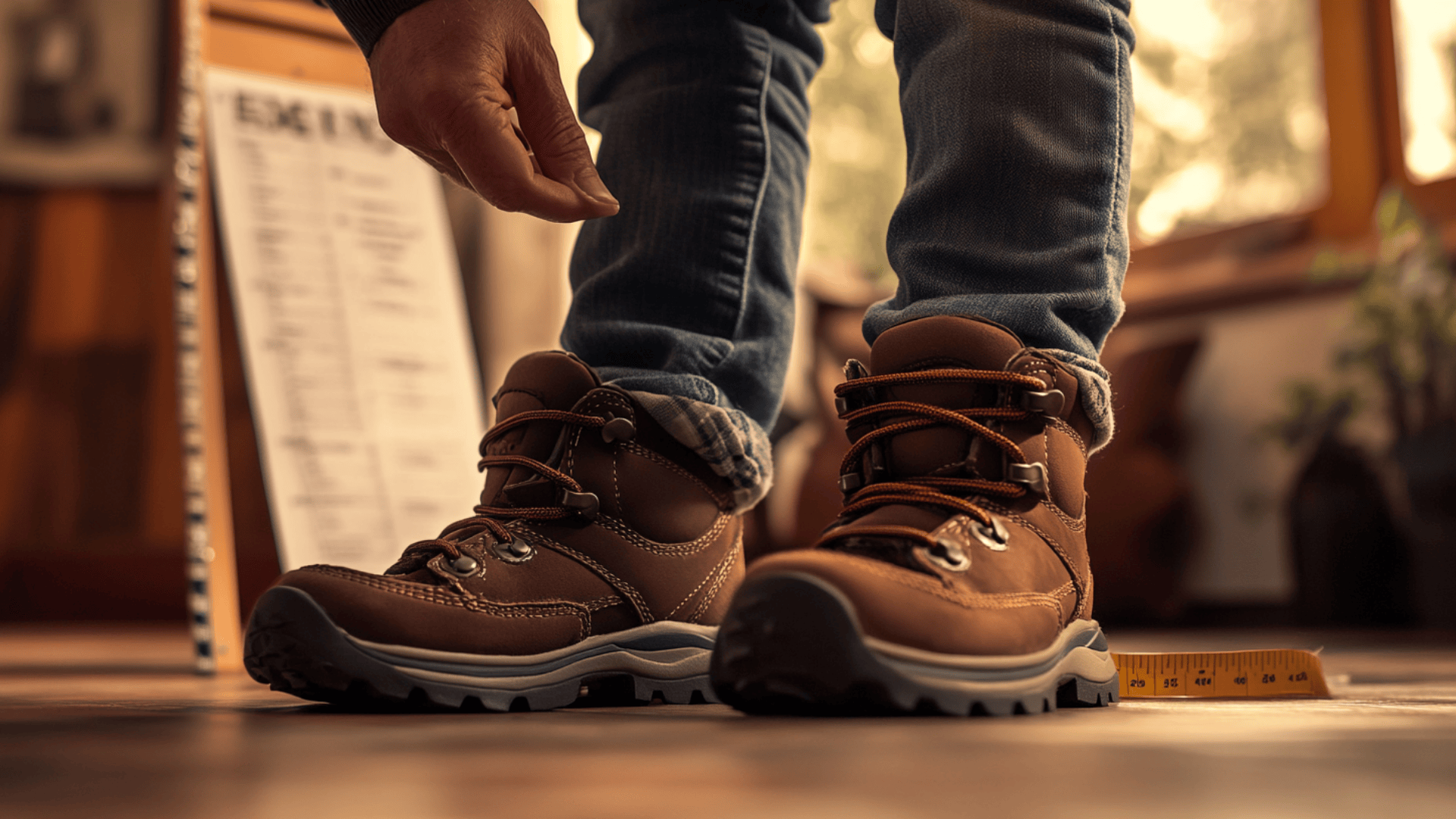
Children’s feet grow quickly, but too-big hiking shoes cause trips and blisters. Buy with about a thumb’s width of space beyond the longest toe.
Check regularly for signs shoes are getting tight—most active kids need new hiking shoes every 4-6 months during growth spurts.
Key tips:
- Red marks on toes signal it’s time for bigger hiking shoes
- Shop late afternoon when children’s feet are slightly larger
- Consider adjustable systems that extend wear time as feet grow
4. How to Clean & Maintain Kids’ Hiking Shoes

After muddy hikes, rinse children’s shoes with cold water and remove insoles to dry. Never put kids’ hiking shoes in washing machines or dryers—high heat damages the materials.
Stuff wet shoes with newspaper to speed drying and maintain shape between family outings.
Key tips:
- Clean mud off promptly, especially from waterproof kids’ shoes
- Use newspaper inside wet shoes to maintain shape while drying
- Apply child-safe waterproofing spray as needed for wet-weather hikes
5. When to Replace Children’s Hiking Shoes

Kids typically outgrow hiking shoes before wearing them out, but watch for worn treads, separation between sole and upper, or complaints about foot pain during hikes.
Growing feet need proper support from shoes that haven’t broken down structurally.
Key tips:
- Check the tread patterns regularly—smooth spots mean less grip on trails
- Watch for separation between sole and upper as a sign of breakdown
- Replace immediately if your child suddenly complains of new foot pain
Final Words
Finding the best hiking shoes for kids doesn’t have to be an uphill battle. The perfect pair will grow with your child’s adventures, providing the support and protection they need while exploring the great outdoors.
Always prioritize proper fit, durability, and weather-appropriate features when making your selection. By investing in quality hiking shoes designed specifically for children’s feet, you’re not just purchasing footwear—you’re investing in countless memorable family adventures and fostering a lifelong love of nature.
So lace up those shoes, hit the trails, and watch as your little hikers discover the joy of outdoor exploration with comfortable, reliable footwear carrying them every step of the way.
Visit us again for fresh travel inspiration, helpful guides, and expert tips.

